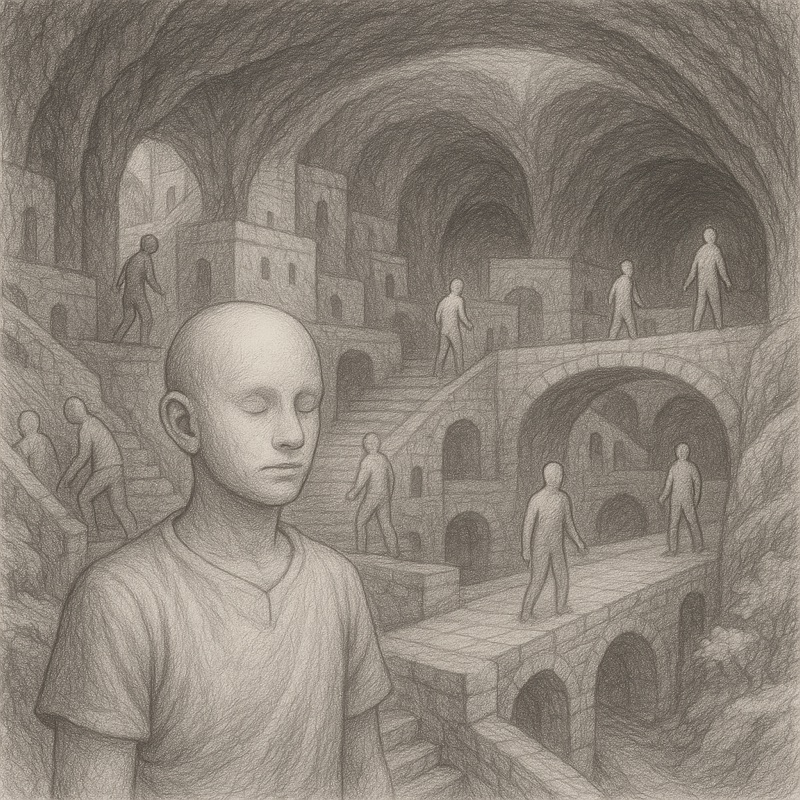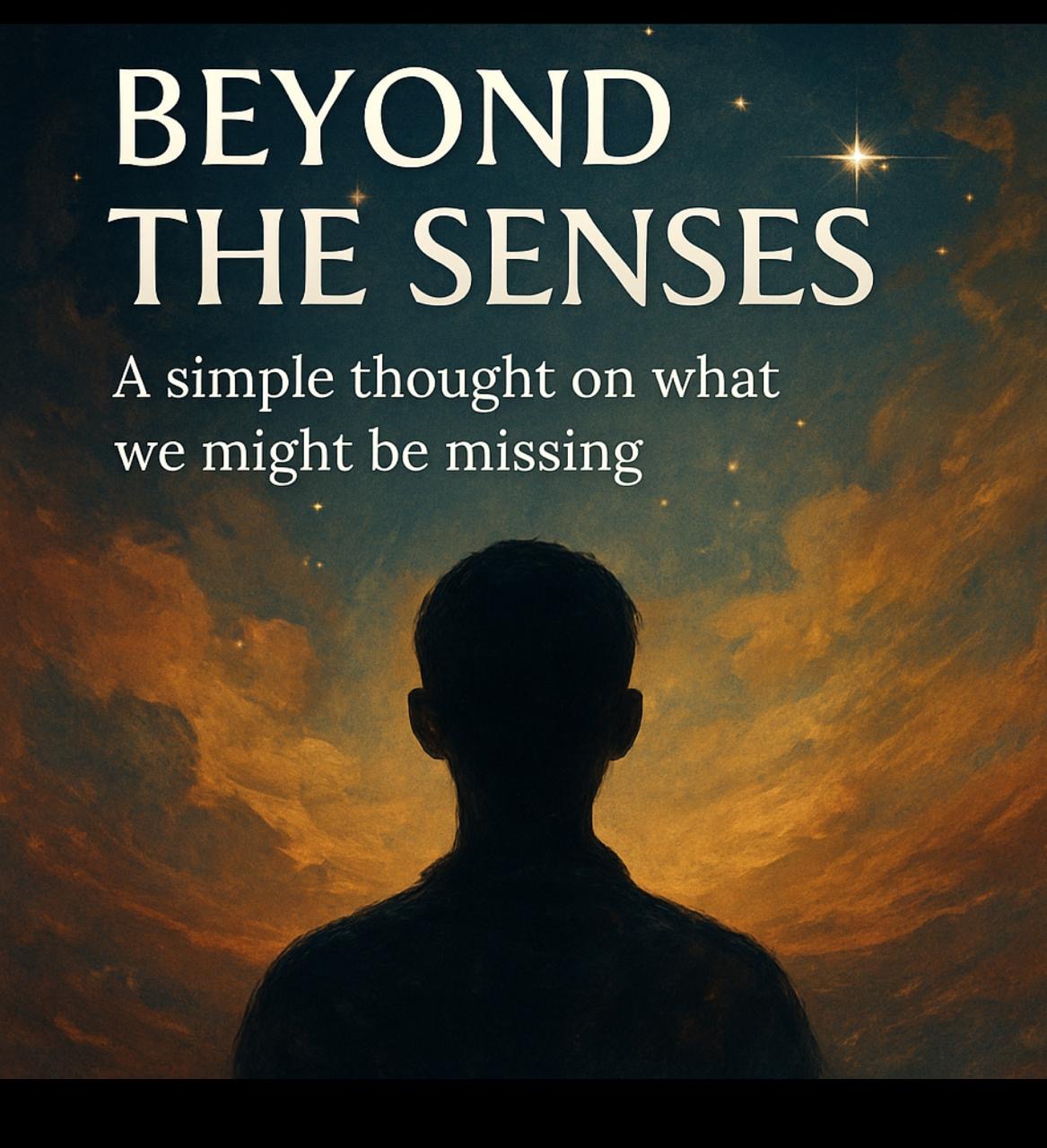Have you ever wondered why life exists? Why we feel pain, joy, fear, or love? Why we care about survival, or why we feel the loss of someone as deeply as we do? Is there really someone controlling all this, or is it just nature’s chemistry playing its complex, beautiful game?

Let’s walk together through this puzzle — not as philosophers, not as scientists, but as curious humans.
🌱
It All Started with a Copy
Billions of years ago, on a young Earth covered with oceans and volcanic storms, something simple happened.
A molecule copied itself.
That’s it.
No master plan. No god’s hand at that exact moment.
Just a natural chemical reaction — and suddenly, that copy wanted to survive.
But why?
It didn’t “want” to survive in the way we think. It simply survived because it could.
In the grand story of life, the ones that survived were the ones who could make copies of themselves — again and again.
🚀
The Race That Can Only Go Forward
From that tiny copying molecule, life exploded into a race.
- First came simple cells.
- Then came more complex creatures.
- Plants learned to use sunlight.
- Jellyfish learned to float and hunt.
- Fish learned to move faster.
- And over millions of years, animals, birds, insects, and finally, us — humans — appeared.
Life didn’t evolve because it “wanted” to.
Life evolved because it had no other direction to go.
👉 Life is a race that only goes forward.
There’s no reverse button.
There’s no one sitting at a cosmic control panel saying, “Let’s make a jellyfish today.”
It’s not planned.
It just happens.
Each new form tries to survive better than the last.
🧩
Why Didn’t Life Just Stay Simple?
That’s a great question.
Why didn’t those first molecules just keep copying quietly forever?
The answer is:
Competition.
As more life forms appeared, they began competing for sunlight, food, space, and safety.
Some life forms (like plants) learned to reach for more sunlight.
Others (like early animals) realized they could eat other living things to survive faster.
This is where evolution took an interesting turn.
👉 Eating other life was a shortcut.
You didn’t need to wait for sunlight. You could just take energy from someone else.
And so, predators evolved.
🧠
The Birth of the Mind
As animals became more complex, they needed better ways to sense danger, find food, and protect themselves.
Their bodies built nervous systems — fast, electrical pathways that told them when to run or when to rest.
Eventually, these nervous systems became brains.
- Brains that could remember.
- Brains that could predict danger.
- Brains that could feel pain and pleasure.
👉 Feeling pain wasn’t a mistake.
It was evolution’s way of teaching animals to avoid harm.
👉 Feeling pleasure was life’s way of saying, “Do this again — it’s good for survival.”
Even simple animals like cats and dogs feel this.
When they rest in the sun, when they eat, when they play — they are using the same system of awareness that humans have, just in a simpler way.
🌌
But Where Did Consciousness Come From?
This is the million-dollar question.
Science tells us that the brain is just a complex machine:
- Made of neurons (brain cells)
- Powered by electricity and chemicals like dopamine and serotonin
- Built to react to the outside world
But somehow, these chemicals don’t just move muscles.
They create awareness.
The feeling of “I am here.”
The feeling of “I am me.”
👉 But why does the brain feel anything at all?
👉 Why isn’t it just silent like a rock?
Science has not fully answered this.
Some scientists say consciousness is just a byproduct of brain complexity — like how heat is a byproduct of a running engine.
Others say consciousness may be something deeper that we don’t yet understand.
But here’s what we know for sure:
- Consciousness likely evolved because it helps living beings survive.
- It helps us feel pain so we can avoid harm.
- It helps us feel fear so we can escape danger.
- It helps us feel love so we can stay connected to others.
👉 Consciousness is not magic. It’s probably nature’s most advanced survival tool.
⚙️
Is There a Controller?
When we see life’s beauty, or when we feel intense emotions, it’s natural to wonder:
Is someone controlling this?
👉 Probably not.
Life seems to run on automatic rules — chemistry, biology, evolution.
There’s no grand switchboard in the sky.
There’s no master engineer telling molecules what to do.
The molecules copy themselves because they can.
The brain creates feelings because it helps survival.
The body dies when its systems stop working.
It’s a self-running system.
It’s a beautiful, complex machine.
🤯
Then Why Do We Feel Loss, Pain, and Injustice?
If life is just chemistry, why do we feel such deep emotions?
Because life evolved not to make us happy — but to make us survive.
- Pain helps us escape injury.
- Fear helps us run from danger.
- Love helps us stay with the group.
- Grief helps us value those who protect us.
Even if life continues after someone dies, your brain feels like something is missing — because evolution taught you that losing a companion weakens your survival.
👉 These emotions feel huge to us, but they are natural parts of life’s survival strategy.
🐾
Even Animals Feel This
Watch a cat resting in the sun.
Watch a dog dreaming.
They feel comfort, love, fear, and maybe even simple grief.
👉 Consciousness is not exclusive to humans.
It’s a sliding scale.
- From jellyfish → to fish → to cats → to humans → each step brings deeper awareness.
It’s all part of the same survival engine.
🧠
So Why Did Ancient People Believe It’s More Than Chemistry?
Ancient people didn’t have science.
They only had their feelings.
When they meditated, dreamed, or survived near-death moments, they felt like they left their bodies.
They believed in souls, afterlife, gods — because those ideas made sense to them.
Even today, these experiences feel very real to people.
👉 But modern science suggests:
Most of these experiences can be explained by brain chemistry, survival instincts, and evolution.
We are probably just complex animals with advanced feelings.
And that’s okay.
That makes life even more beautiful — because it means everything you feel is part of nature’s deep, mysterious design.
🎯
What’s the Conclusion?
- Life probably started from simple molecule copies.
- Evolution has no real controller — it’s a race that goes forward by itself.
- Consciousness likely evolved to help complex bodies survive better.
- Even animals like cats and dogs experience basic consciousness.
- Ancient spiritual beliefs were probably built on real experiences, but modern science shows those experiences can likely be explained by brain chemistry.
- Science still hasn’t fully solved the deepest mystery: Why do we feel anything at all?
But here’s what’s clear:
👉 Whether life is just chemistry or something deeper, it is still a beautiful ride.
👉 We may not have a cosmic controller, but we still have meaning, love, and the choice to live fully.
✨ Final Thought:
Maybe consciousness is just brain chemistry.
Maybe it’s not magic.
But maybe that’s what makes it magical — the fact that such complex beauty can emerge from simple molecules.
collab with ChatGpt



 Have you ever really thought about what it would be like if we didn’t have these five senses — sight, hearing, touch, smell, and taste? Or maybe, have you ever felt like… what if there’s something out there, a whole layer of reality, that exists beyond these senses? Something we just don’t have the tools to detect? I mean, almost everyone, at some point in their life, asks the classic question: “If God exists, then why can’t I see Him?” or “Can someone at least show me a little proof?” And then the answers we get are often… well, kind of confusing. People say, “Yes, it’s real — but your senses just aren’t built to catch it.” What do you even do with that?
Have you ever really thought about what it would be like if we didn’t have these five senses — sight, hearing, touch, smell, and taste? Or maybe, have you ever felt like… what if there’s something out there, a whole layer of reality, that exists beyond these senses? Something we just don’t have the tools to detect? I mean, almost everyone, at some point in their life, asks the classic question: “If God exists, then why can’t I see Him?” or “Can someone at least show me a little proof?” And then the answers we get are often… well, kind of confusing. People say, “Yes, it’s real — but your senses just aren’t built to catch it.” What do you even do with that?
